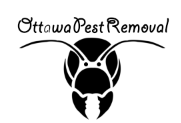Carpenter ants damage the wood at your home by hollowing it out for dwelling or in other words, nesting. Unlike termites, wood damaged by carpenter ants doesn’t contain mud-like debris. Instead, ant nests have a smooth, sandpapered appearance.
Carpenter ants typically make colonies in a moist environment but will nest in dry wood. Moist areas around windows, leaky roofs and chimneys, bathtubs and sinks, and exterior areas that are in touch with soil are a major breeding ground for these ants.
These little pests can cause tremendous damage in your home by burrowing tunnels through wood and insulation. Although they’re a nuisance, you can do tons to stop ant colonies from forming in and around your home. Here are five ways to guard your house against carpenter ants.
- You can control carpenter ants by eliminating conditions that encourage colonies to nest and destroying their nests. Often, ants found inside the house may very well nest outdoors. Dead or dying trees, untreated landscaping timber, old stumps, and are common nesting grounds of these ants.
- Routine household maintenance will go an extended way in preventing ant infestation. Follow the following pointers to scale back the likelihood of infestation.
- Ants are more found in moist wood. Repair plumbing leaks and roofs, overflowing gutters, all the water infiltration problems, and leaky chimney flashing to avoid them create a good nesting area for themselves.
- Trim trees and bushes that touch your home’s sides and roofs
- Examine cracks, and tightly seal openings where wires and pipes enter the house.
- Eliminate wood-to-soil contact, especially where landscaping comes in touch with the house. Use a non-organic if you think the world where you reside has an infestation problem.
- Don’t store firewood directly on the bottom.
- Routine inspection is usually a nice idea.
- Try to never keep firewood inside for more than one or two days.
- Consider piling firewood at a minimum distance of 20 feet far away from your home.
Carpenter ants destroy home in a different way as compared to termites. They are capable of making their nests in both dry blocks of wood as well as moist environments. Common breeding grounds of carpenter ants are mostly found around old tree stumps, windows, bathtubs, sinks, and dead or dying trees near your home. They’re among the sorts of ants, averaging about ¼-inch to 3/8-inch long, and they’re typically black, yellowish, or reddish in color. Follow these steps to protect your home from carpenter Ant damage.
